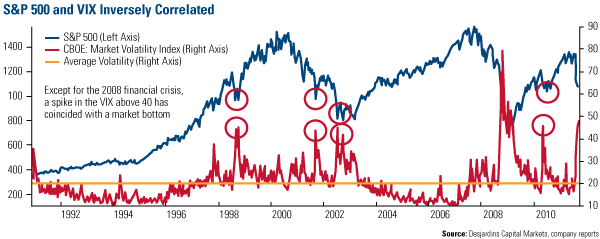(Reuters) - Italy's problem is not a high budget deficit but chronically weak growth, and forcing it to frontload austerity measures just as its economy is moving into yet another downturn may prove dangerously counter productive.
After a massive sell-off of Italy's government
bonds threatened to make the euro zone debt crisis totally unmanageable, the European Central Bank agreed on Sunday to buy Italian bonds on the market, but only on stringent conditions.
The ECB, supported by the French and German governments, demanded
Italy bring forward plans to balance its budget by one year to 2013 and urgently adopt reforms to liberalize its hidebound economy and boost growth.
Backed into a corner, Prime Minister Silvio Berlusconi accepted.
The second goal is vital and long overdue, but the first seems like a panic response to the recent market turmoil -- which has also swept up Italy's banks -- and could undermine the prospects for recovery and even for public finances in the medium term.
To respond to the ECB's prescription Economy Minister Giulio Tremonti must now frontload 20 billion euros of deficit cuts which could tip an already weakening economy into recession.
Early indications of measures considered, such as a wealth tax, cuts in welfare benefits and slashing tax breaks for firms and families will do nothing to help stagnant domestic demand.
"This latest fiscal tightening will definitely hit the economy, private consumption is going to be significantly weaker," said Barclays Capital analyst Fabio Fois.
He said in response to the latest news that he was in the process of cutting his growth forecasts for Italy, which stood at an anemic 1.0 percent in 2011 and 1.1 percent in 2012.
Berlusconi promised on Wednesday an emergency decree to approve austerity measures but faced union opposition over concern that the cuts would hit ordinary Italians.
A failed debt-cutting drive, if it also derails the structural reforms the economy desperately needs, could be the worst outcome of all.
"If the austerity budget hits the usual suspects we will mobilize to change it," Susanna Camusso, head of the CGIL, Italy's biggest union federation, told reporters after a meeting with ministers.
GROWTH LAGGARD
In the last 10 years, average Italian growth has risen less than 0.3 percent per year, making it not only the most sluggish economy in the
euro zone but the third most sluggish in the world, ahead of only Zimbabwe, Eritrea and Haiti.
In the same period it was the only advanced economy to see a contraction of per-capita gross domestic product, hourly productivity has been stagnant and Italians' real purchasing power has fallen by 4 percent.
When the euro zone goes into a recession Italy goes into a deeper one, but when the rest of the euro zone recovers Italy's rebound is weaker. It has still regained only two of the seven percentage points of output it lost during the 2008-9 recession.
This wasting disease is Italy's curse, not a budget deficit which, at a targeted 3.9 percent of GDP this year is already below the euro zone average and is forecast by international bodies to remain so in coming years.
Indeed, until the summer, one of the main reasons Italy had stayed on the sidelines of the debt crisis was the prudent fiscal policy pursued by Tremonti, who kept a lid on spending and eschewed any significant stimulus during the recession.
Bank of Italy chief Mario Draghi was reportedly the co-author of a letter from the ECB to Italy's government telling it to balance the budget faster, yet in a keynote speech just two months ago Draghi called the 2014 target date "appropriate."
Even before the news of tougher austerity to come, analysts said a modest growth recovery in the second quarter, when GDP rose 0.3 percent, was already over. Some forecast that the economy could even contract between July and September.
Recent data has been dismal. Industrial output fell 0.6 percent in June after an identical decline in May. Purchasing managers' indexes for the last two months have pointed to an economy in stagnation at best, and business confidence in July fell for the fourth month running to its lowest level for a year.
DEFICIT CONTROL
Markets are likely to react just as badly to a further deterioration in Italy's economy as they are to any fiscal slippage of which, in any case, there has so far been no sign.
In the first seven months of the year, the central government budget deficit was 5 billion euros lower than in the same period of 2010.
One of the first triggers of what began as a gradual market attack on Italy were cuts in its ratings outlook by Standard & Poor's in May and then by Moody's a month later.
Yet neither agency called for accelerated deficit cuts. Rather, in strikingly similar analyses, they said weak growth and an inability to pass reforms threw doubt on the prospects for bringing down Italy's huge public debt in the medium term.
Italy's debt, like its deficit, has risen far less than those of its main partners, but at 120 percent of GDP it is still second highest in the euro zone after Greece's, and at 1.8 trillion euros is second only to Germany's in absolute terms.
Of course if Italy slashes new borrowing its stock of debt will also fall. But permanent austerity is unsustainable and the debt-to-GDP ratio will drop far more easily if it can match even modest deficit curbs with halfway decent GDP growth.
Only if it responds to that challenge does Italy have any hope of ending its inexorable decline and, more urgently, of avoiding a cut in its credit rating next month.
"Moody's review of Italy's sovereign rating will focus on the growth prospects for the Italian economy in coming years, and particularly the prospects for a removal of important structural bottlenecks that could hinder a stronger economic recovery in the medium term," the agency said in June.
See the original article >>








